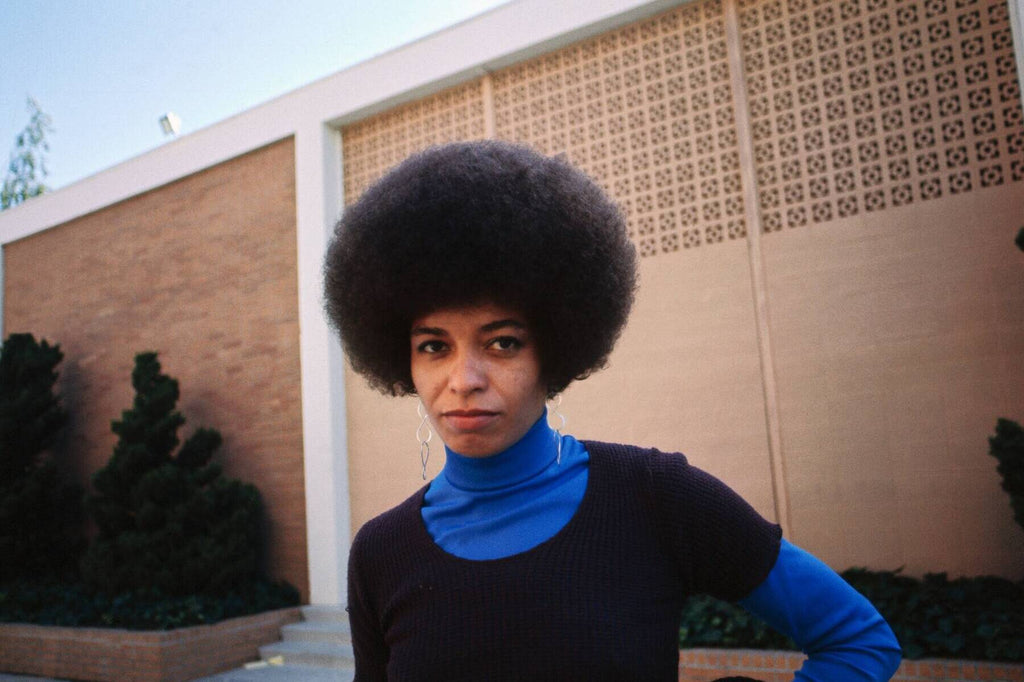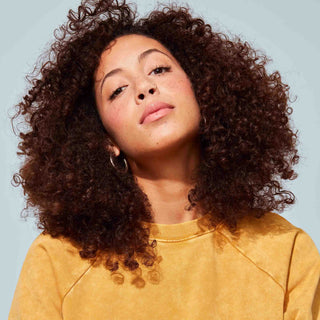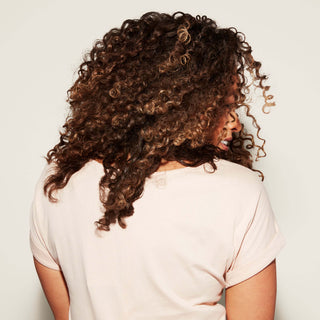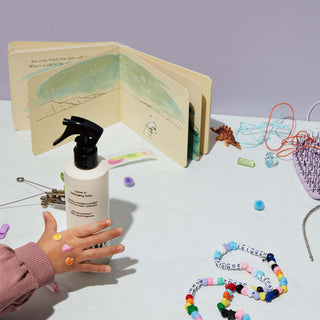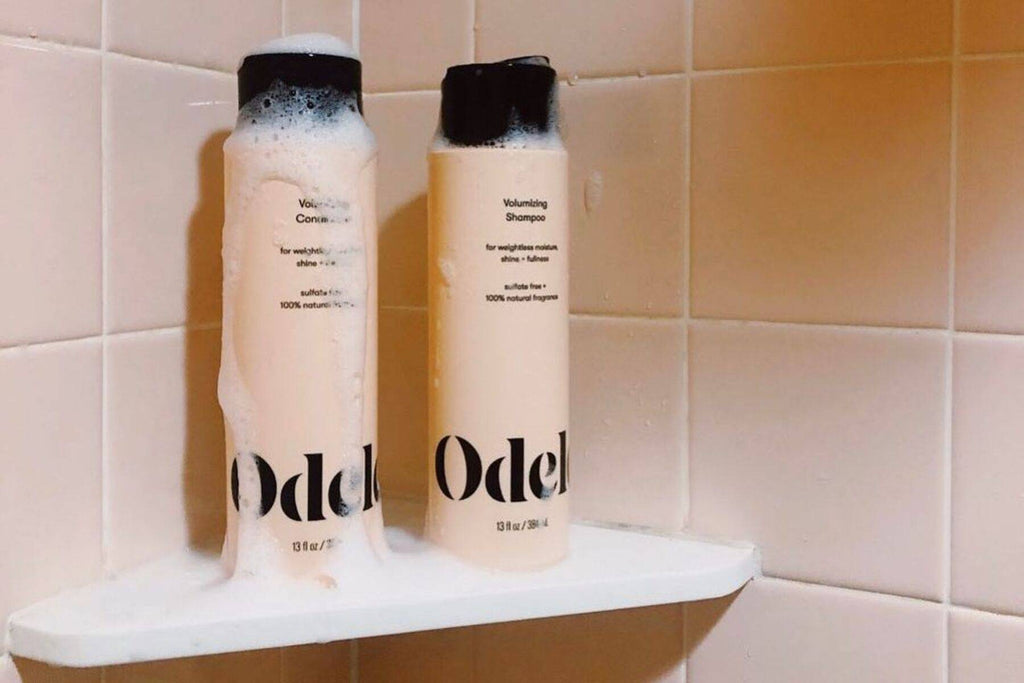Hair means something different to each of us, but Black hair has a uniquely meaningful history as a symbol of survival, resistance and celebration. It’s been wielded as a tool of oppression and also one of empowerment—and our society’s perceptions of Black hair still influence how Black people are treated today. Here are six things to know and appreciate about the rich cultural, aesthetic and social history of Black hair.
1. Hair was a sacred cultural and spiritual symbol in ancient African societies.
Ancient African communities fashioned their hair for more than just style. Throughout the continent, a person’s hairstyle could tell you a lot about who they were and where they came from. In the book Hair Story: Untangling the Roots of Black Hair in America, authors Ayana Byrd and Lori L. Tharps explain that braids and other intricate hairstyles were historically worn to signify marital status, age, religion, wealth and rank in society. From kings’ ornate beaded braids to special headdresses worn by new mothers, these styles had deep cultural and historical roots.
It could take hours and even days to create these artful looks, so hair styling was also an important social ritual, a time to bond with family and friends (a tradition that’s been passed on for generations—hi, baby Olympia!).
Hair was also thought to be a source of personal and spiritual power. As the most elevated part of the body, some communities believed it connected them with the divine. In Yoruba culture, for example, people would braid their hair to send messages to the gods.
2. Slave traders shaved the heads of all African people they captured—the first step in a process of systemic culture and identity erasure.
During the transatlantic slave trade, an estimated 12 million African men, women and children were kidnapped and sold into slavery. One of the first things the slave traders did to the people they captured was shave off their hair. Considering the strong spiritual and cultural importance of hair in Africa, it was a particularly dehumanizing act, intended to strip away their connection to their cultures.
When their hair grew back, they no longer had access to the herbal treatments, oils and combs from their homeland. Hair that was once was once a source of pride and expression of identity was often tucked away beneath cloth to cover rough, tangled tresses and shield them from hours spent toiling under the sun. With limited tools and time to care for their hair, people got creative with what they had at their disposal—relying on bacon grease, butter and kerosene as conditioners, cornmeal as dry shampoo and sheep fleece carding tools as combs.
3. Hair texture and styling played an important role in the survival of enslaved Black people.
Texturism, the belief that certain hair patterns are better than others, became widespread during the era of slavery. The texture of an enslaved person’s hair could determine their value and working conditions, which in turn might impact their overall health, comfort and chances for freedom.
Eurocentric beauty standards dictated that coily hair and dark skin were unattractive and inferior; “good hair” was characterized by straighter, more European features. Lighter-skinned, straighter-haired slaves were favored and selected for more desirable positions in the house, so many slaves would go to dangerous lengths to straighten their hair, using hot butter knives or chemicals that burned their skin. This damaging mentality of “good hair” and “bad hair” has been passed down for generations, and it still influences many people’s perception of natural Black hair today.
Braids also transformed into a tool for slaves looking to escape to freedom. Because drawing or writing directions was risky (and often difficult with little to no education), they would cornrow their hair to map escape routes, braiding the plaits into patterns that resembled roads to travel or avoid. Small bits of gold and seeds were hidden in the braids to sustain them after their escape.
4. Laws passed in the 18th century forced Black women to cover their hair in public.
When free Black women in the South started wearing their hair in beautiful, elaborate styles that attracted a lot of attention, many saw it as a threat to the status quo. So, in 1786 the governor of Louisiana passed the Tignon Law, which required Black women to wear a tignon (scarf or wrap) over their hair as a way of signifying that they were members of the slave class, even if they were “free.” They followed the law, but rebelled by wearing beautiful, colorful fabrics adorned with jewels, turning the head wraps into glamorous, empowering fashion statements.
Once the U.S. took ownership of Louisiana through the 1803 Louisiana Purchase, the Tignon Laws were no longer enforced, but they still set the precedent for the policing of Black hair in the U.S. Many Black women continued to wear their head wraps as a symbol of resistance to white colonialism.
5. In the 1960s, the afro became a symbol of self-empowerment and activism.
An extension of the civil rights movement, the Black Power Movement of the 1960s and 1970s aimed to change the Black community’s understanding of itself and its influence on society. The natural afro became a popular statement of power, pride and resistance. Some people felt hair straightening reflected a history of forced assimilation, so embracing their natural textures was a way of reclaiming their roots. Rocked by iconic Black activists, scholars and artists like Angela Davis, Toni Morrison and Nina Simone, the hairstyle symbolized the enduring fight against racism.
Lori L. Tharps of Hair Story explains, “Our hair was a physical manifestation of our rebellion. The right to wear our hair the way it grows out of our heads. Saying to the establishment: 'Accept us and appreciate us for who we are.' Stop expecting us to assimilate or subjugate ourselves to make you comfortable.”
6. Institutional bias against Black hair still exists today, and will continue to exist if we don’t push for change.
The Perception Institute’s 2016 “Good Hair” Study suggests that “a majority of people, regardless of race and gender, hold some bias toward women of color based on their hair.” (You can explore the results and take the hair bias test they developed here.) A 2020 Duke University study also found that Black women with natural hairstyles were perceived as less professional, less competent and were less likely to be recommended for job interviews than candidates with straight hair (who were viewed as more polished, refined and respectable).
Many schools and workplaces across the country are still legally enforcing prejudiced policies against Black hair, from landmark cases like that of Chastity Jones (whose job offer was withdrawn because she refused to cut off her dreadlocks) to everyday incidents like that of Jenesis Jones (whose high school penalized her for her “inappropriate” afro).
With The CROWN Act—the first legislation in U.S. history to ban discrimination based on hair style and texture—now passed in several states and on its way to becoming national law, we’re on a hopeful path to more inclusivity, acceptance and appreciation of all hair types. There's still a lot more work to be done, but growing diversity of representation in the media, our government and the beauty industry is helping to squash racist stereotypes and start meaningful conversations—and that is something worth celebrating.
Learn more about The CROWN Act and sign the petition to end race-based hair discrimination here.
The Drop
There is so much to explore about the history of Black hair beyond what we can cover in one post—so we’ll share more with you soon! In the meantime, here are some amazing resources to check out.Books
Hair Story: Untangling the Roots of Black Hair in America by Ayana Byrd and Lori L. Tharps
Textures: The History and Art of Black Hair by Tameka Ellington and Joseph L. Underwood
Articles
The History Of Black Hair In America
A Visual History of Iconic Black Hairstyles
How Natural Black Hair at Work Became a Civil Rights Issue
A Brief History of Black Hair, Politics, and Discrimination
Videos
The Psychology of Black Hair | Johanna Lukate | TEDxCambridgeUniversity

